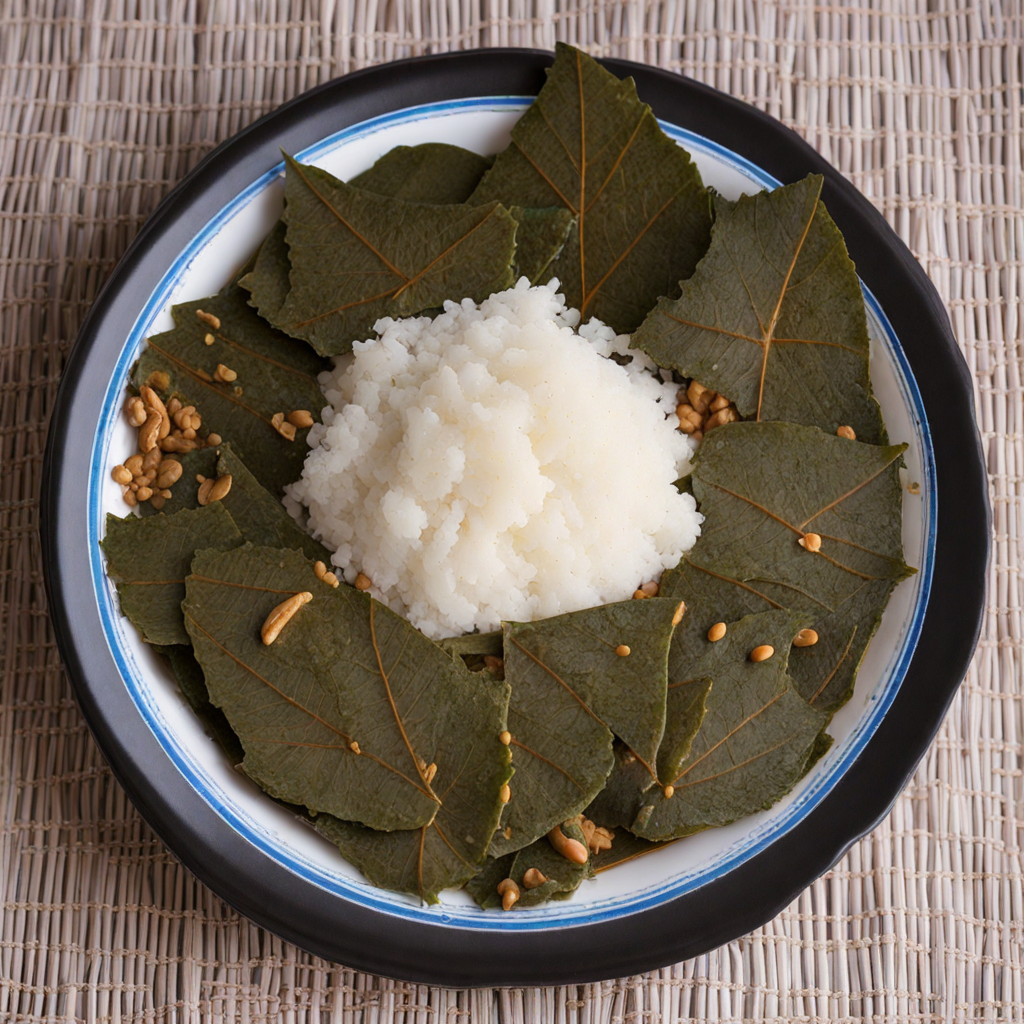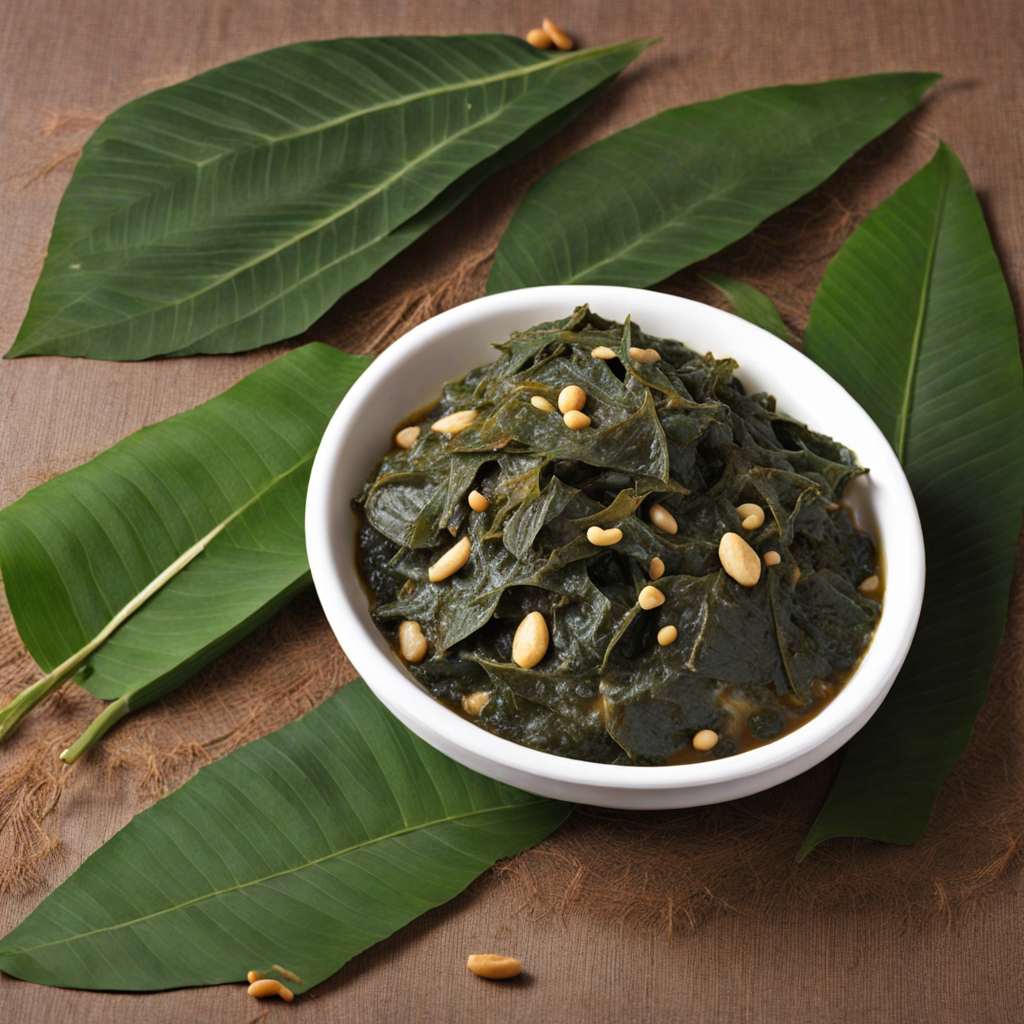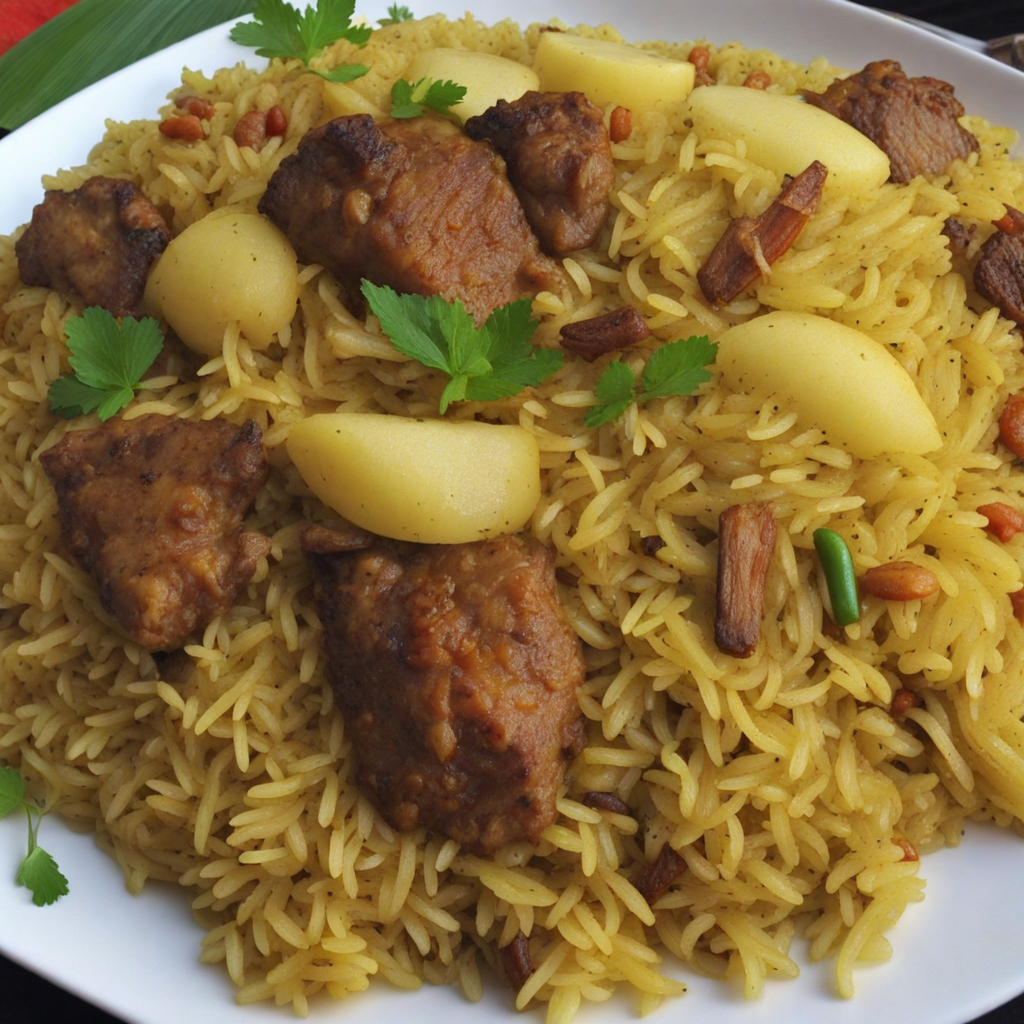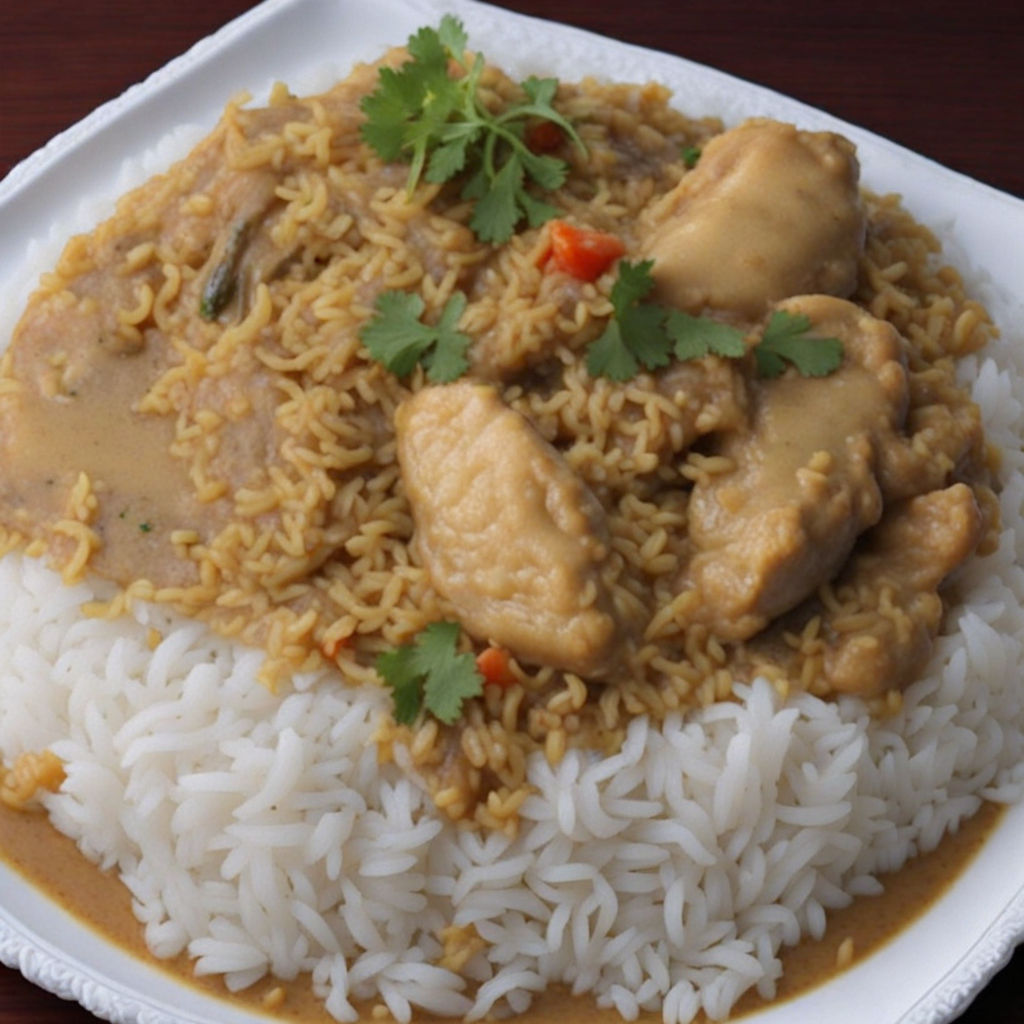Kisamvu
Kisamvu is a traditional Tanzanian dish that showcases the unique flavors of East African cuisine. This delightful preparation primarily features cassava leaves, which are tender and packed with nutrients. The leaves are typically cooked until soft and are then combined with ground peanuts or sesame seeds, creating a rich, creamy texture that enhances the dish’s complexity. The harmonious blend of flavors is further elevated by the addition of spices such as salt, pepper, and sometimes a hint of chili, which adds a subtle kick to the overall taste profile. The preparation of Kisamvu is an art in itself, often involving slow cooking to allow the flavors to meld beautifully. It is common to see this dish served alongside a staple carbohydrate like ugali, rice, or plantains, providing a perfect balance of flavors and textures. The combination of the earthy, nutty taste of the cooked cassava leaves with the starchy side dishes creates a satisfying and wholesome meal. This dish is not only delicious but also reflects the agricultural heritage of Tanzania, highlighting the importance of local ingredients. Kisamvu is more than just a meal; it is a celebration of communal dining and sharing. Often enjoyed in family settings or gatherings, it embodies the spirit of togetherness that is central to Tanzanian culture. As you take your first bite of this delectable dish, you'll be transported to the vibrant landscapes of Tanzania, experiencing the warmth and hospitality of its people through their culinary traditions. Whether you're a seasoned foodie or new to exploring international flavors, Kisamvu offers a unique taste of Tanzania that is sure to leave a lasting impression.
How It Became This Dish
The History of Kisamvu: A Culinary Gem of Tanzania Kisamvu, a traditional Tanzanian dish, embodies the rich agricultural heritage and cultural diversity of the region. This dish, primarily made from cassava leaves, has deep roots in the culinary practices of various Tanzanian communities. Understanding Kisamvu requires a journey through the historical, agricultural, and social landscapes of Tanzania, where food is not just sustenance but a symbol of identity and community. #### Origins of Kisamvu The history of Kisamvu is intrinsically linked to the cultivation of cassava (Manihot esculenta), a staple crop in sub-Saharan Africa. Originally native to South America, cassava was brought to Africa by the Portuguese in the 16th century. Its adaptability to different soils and climates made it an ideal crop, quickly becoming a dietary staple across the continent. In Tanzania, cassava flourished, especially in the coastal regions and the inland areas, where it became a key ingredient in local cuisines. Kisamvu, specifically, refers to a dish primarily made from the leaves of the cassava plant, which are often cooked with ground peanuts, spices, and sometimes fish or meat. The use of cassava leaves is not just a matter of taste; it is also a reflection of resourcefulness. In many Tanzanian communities, cassava leaves were historically regarded as a byproduct of the cassava root, which is more widely consumed. However, over time, these leaves have gained recognition for their nutritional value and culinary versatility. #### Cultural Significance In Tanzanian culture, food is deeply intertwined with social practices and traditions. Kisamvu is often served during communal gatherings, celebrations, and religious events, symbolizing unity and sharing. The dish is more than just a meal; it represents the collective identity of the people who prepare and consume it. In many communities, the preparation of Kisamvu is a communal activity, where families and neighbors come together, sharing stories and laughter as they work. Moreover, Kisamvu holds significant nutritional value. The cassava leaves are rich in vitamins A and C, calcium, and protein, making it an important part of the diet, especially in regions where other sources of protein may be scarce. The addition of ground nuts enhances the flavor and nutritional profile, providing healthy fats and additional protein. As such, Kisamvu not only nourishes the body but also reinforces the idea of food as medicine, a concept deeply rooted in many African cultures. #### Development Through Time As Tanzania evolved through the 20th century—through colonialism, independence, and globalization—the culinary landscape also transformed. The traditional preparation of Kisamvu remained largely intact, yet it began to absorb influences from various cultures. During the colonial period, as different groups settled in Tanzania, they brought their culinary practices, which sometimes merged with local traditions. This fusion is evident in the various regional variations of Kisamvu, which may include ingredients based on local availability and cultural preferences. In more urban settings, the dish has adapted to the fast-paced lifestyle of city dwellers. Traditional cooking methods, which often involve slow simmering over an open flame, have been complemented by modern techniques. For example, many urban households now use electric stoves and pressure cookers, reducing preparation time while still aiming to preserve the authentic flavors of Kisamvu. Additionally, the global movement towards healthy eating and sustainable agriculture has renewed interest in traditional Tanzanian dishes like Kisamvu. As people become more conscious of the nutritional value of their food choices, the appeal of Kisamvu has grown. It is increasingly being featured in restaurants that focus on local and sustainable cuisine, showcasing the dish to both Tanzanian nationals and international visitors. #### Regional Variations Kisamvu is not a monolithic dish but rather a canvas for regional creativity. In the coastal regions, for instance, Kisamvu may be prepared with coconut milk, adding a rich, creamy texture and a hint of sweetness. In areas closer to Lake Victoria, fish such as tilapia might be incorporated, providing an additional layer of flavor and protein. Furthermore, the way Kisamvu is served can vary: in some communities, it is accompanied by ugali (a stiff maize porridge), while in others, it may be paired with rice or served as part of a larger spread of dishes. The variations of Kisamvu reflect the agricultural practices and available resources of different regions. For example, in areas where peanuts are abundantly grown, ground peanuts may be a staple ingredient in Kisamvu recipes, while in regions where other local nuts are prevalent, those might take precedence. This adaptability not only highlights the versatility of Kisamvu but also showcases the rich biodiversity of Tanzania’s agricultural landscape. #### Kisamvu in Contemporary Tanzanian Society Today, Kisamvu remains a beloved dish in Tanzania, celebrated in homes and restaurants alike. As the younger generation becomes more interested in their culinary heritage, there is a resurgence of traditional cooking methods and recipes. This revival is often seen at family gatherings and cultural festivals, where Kisamvu is prepared in large quantities, symbolizing abundance and hospitality. Moreover, Kisamvu has garnered attention in the realm of social media, where food bloggers and enthusiasts share their versions of the dish, often highlighting its health benefits and cultural significance. This digital platform has created a space for dialogue about food, culture, and identity, allowing Kisamvu to reach a wider audience and encouraging a new appreciation for traditional Tanzanian cuisine. Conclusion Kisamvu is more than just a dish; it is a testament to Tanzania’s rich agricultural practices, cultural history, and community values. From its origins linked to the introduction of cassava in Africa to its evolution in contemporary society, Kisamvu serves as a delicious reminder of the resilience and creativity of Tanzanian people. As it adapts to modern tastes and lifestyles, this traditional dish continues to foster a sense of identity and belonging, ensuring that the flavors of Kisamvu will be cherished for generations to come.
You may like
Discover local flavors from Tanzania







